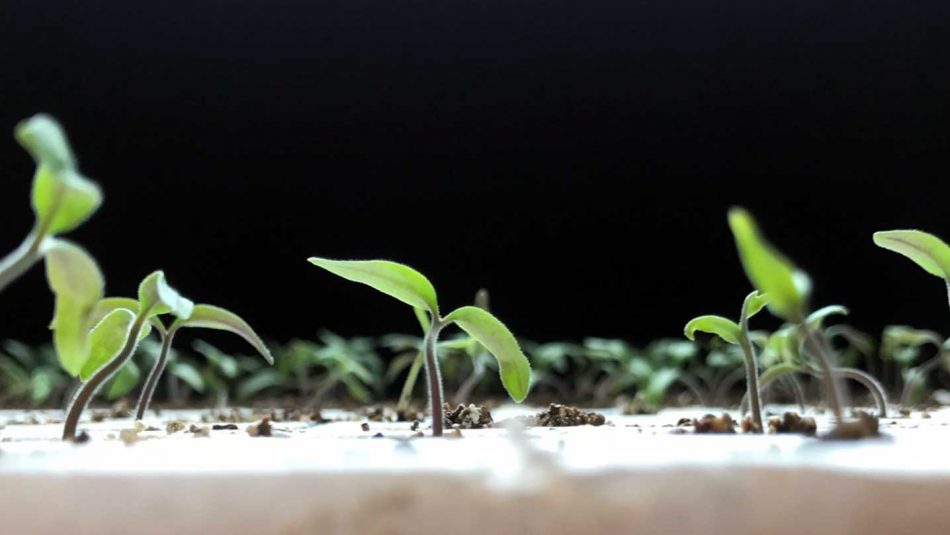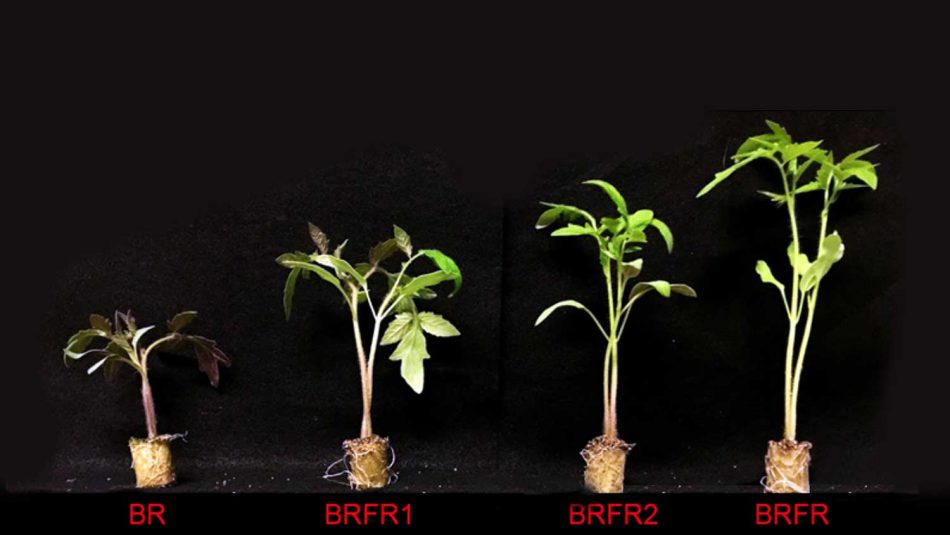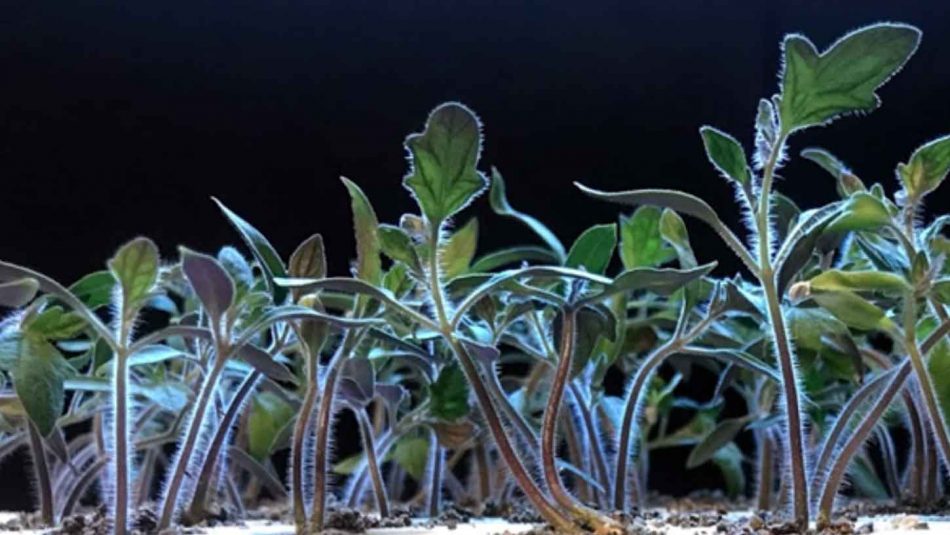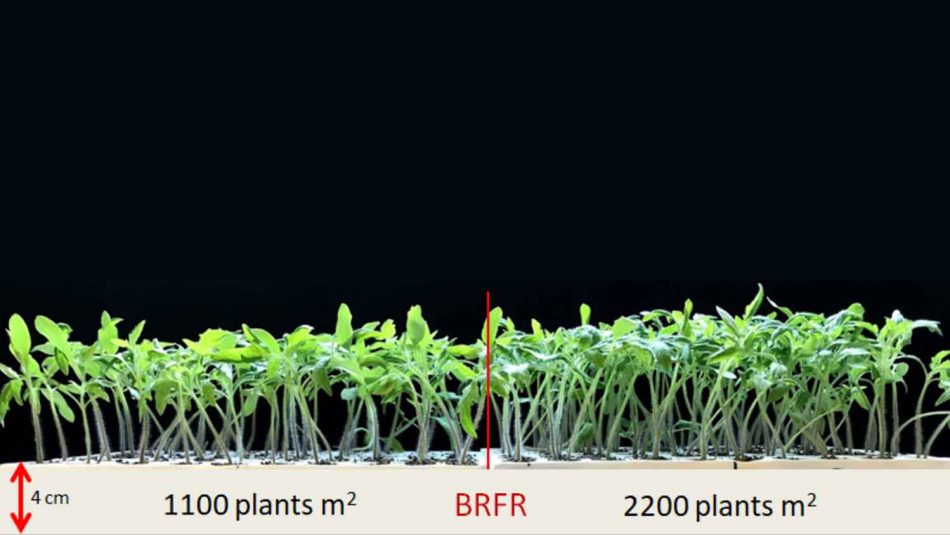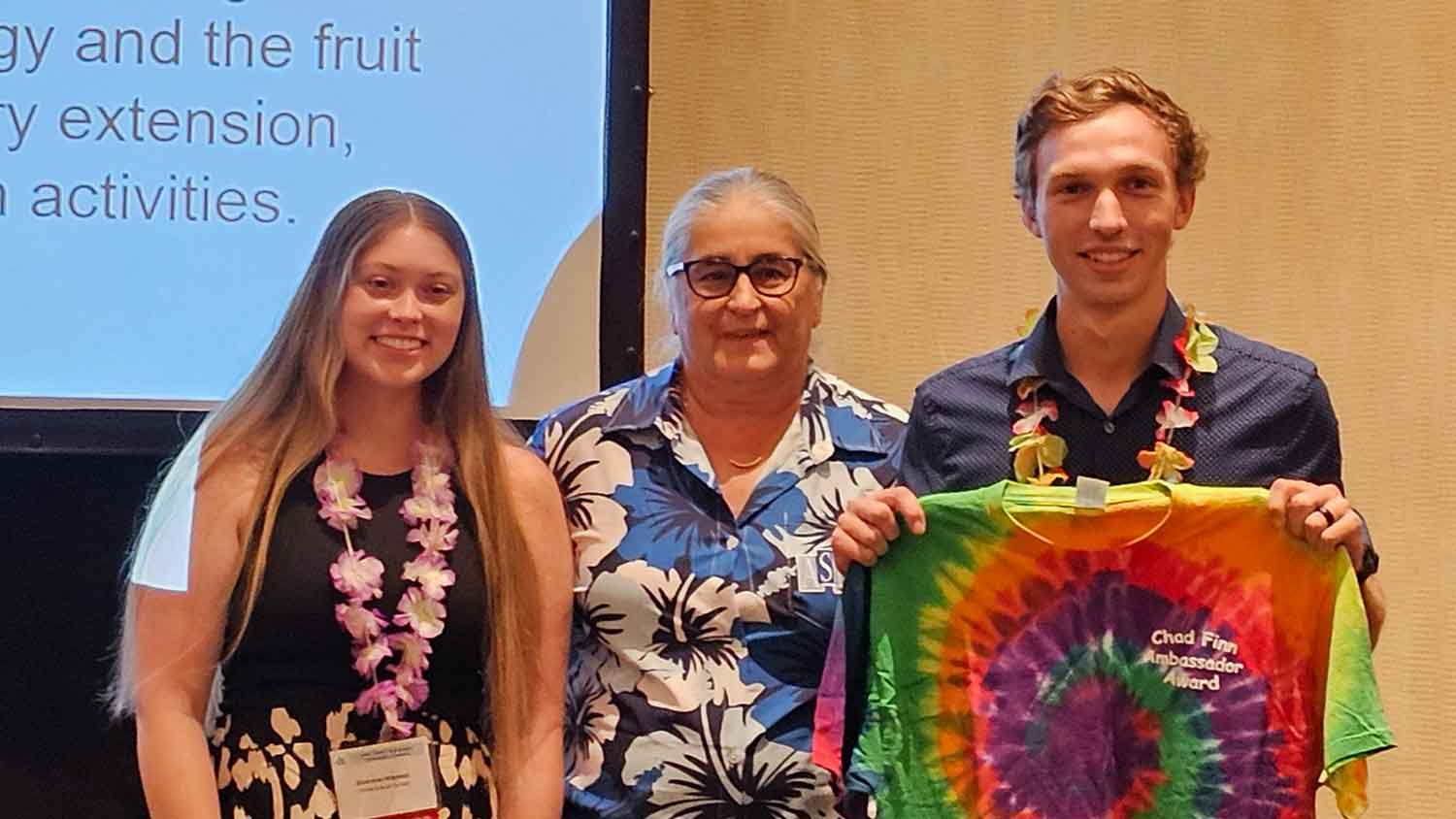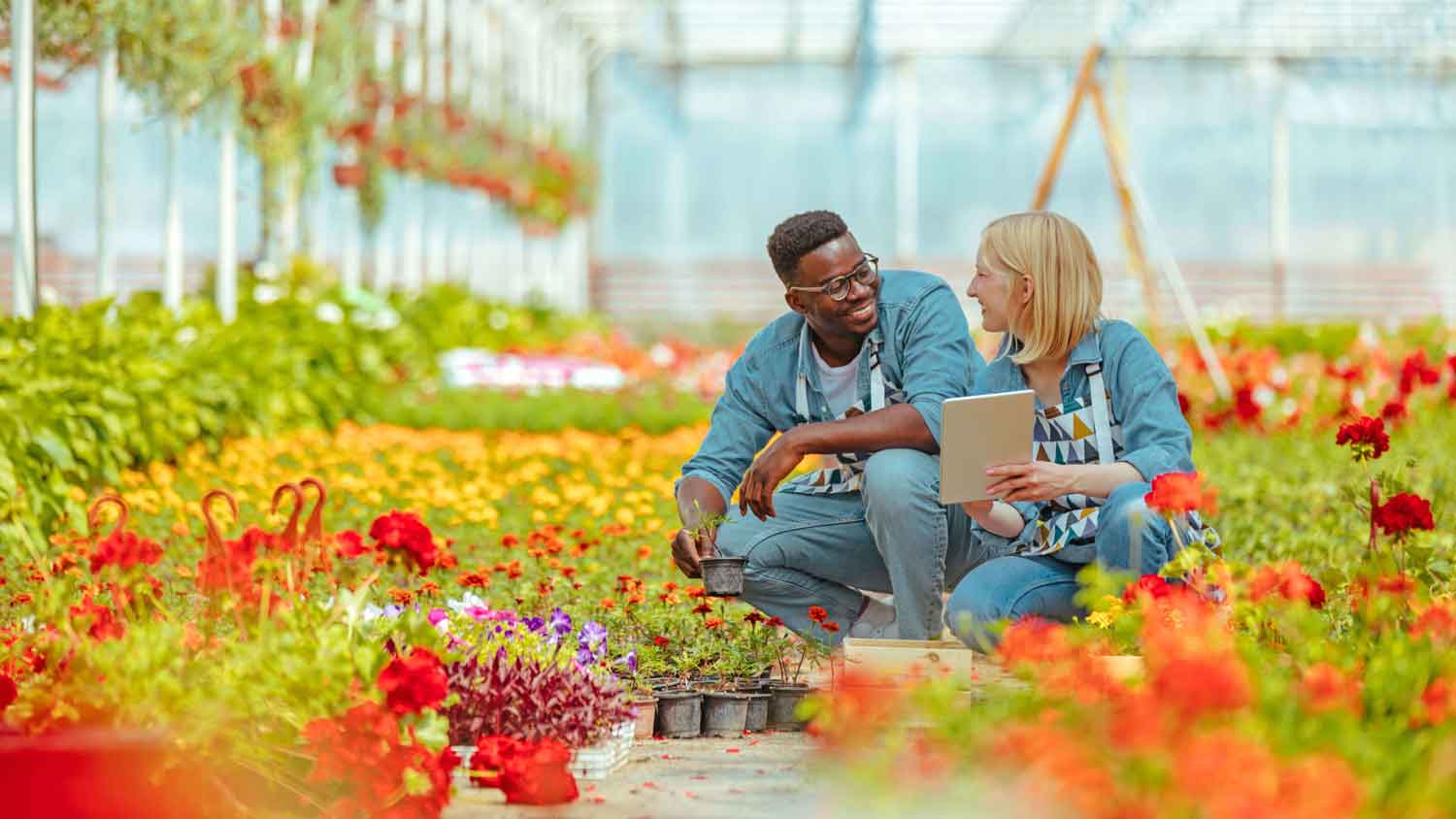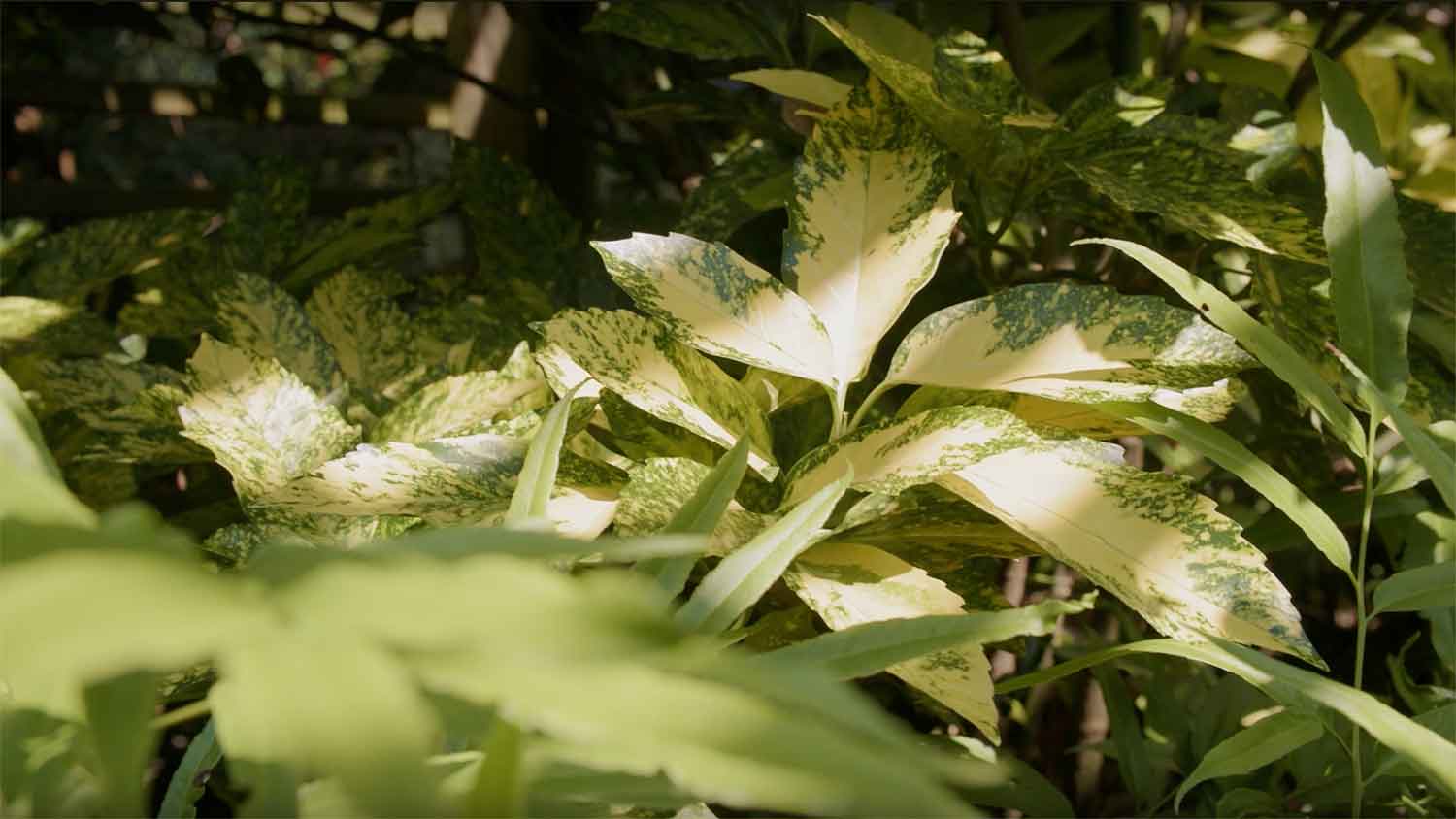Far-red Light Enhances Density of Tomato Seedlings
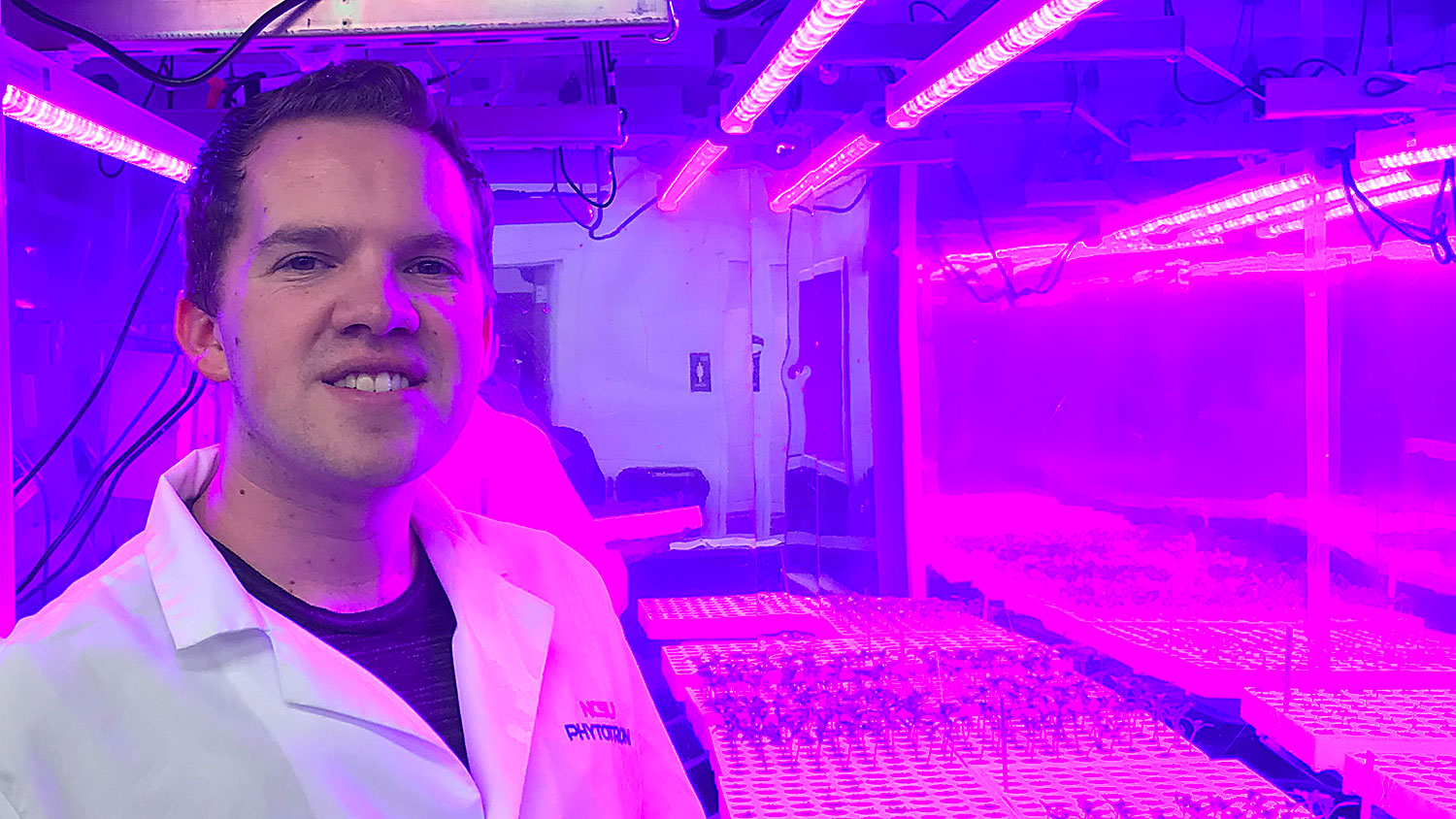
Brandon Huber, a Ph.D. candidate of Horticultural Science, shared some of his tomato research so that we may better understand indoor controlled environmental horticulture and its impact on young plant production. While studying indoor controlled environmental horticulture under the direction of Ricardo Hernandez, Huber was awarded second place at the national level from the American Horticultural Science Society (ASHS) for his oral presentation Dynamic Far-red light treatments to maintain plant uniformity in high-density tomato seedlings for grafting.
What is an indoor controlled environment system and how can it be used to improve the propagation of tomato seedlings?
An indoor controlled environment offers the highest precision in environmental control, exceeding the control that a traditional greenhouse can offer. Indoor controlled environment systems are completely contained indoors and remove environmental constraints such as seasonal variations in light intensity and temperature fluctuations that occur in a greenhouse. Because of this, we are able to increase spatial and temporal plant uniformity of transplants which leads to consistently high quality and high grafting success rates.
These systems also allow for complete control of the environment and allows you to completely customize each environmental factor to optimize conditions to the needs of each crop. Some of these optimizations include spectral quality, CO2 enrichment, air velocity, and precise temperature and humidity control. These features increase the sustainability of controlled environments such as optimizing plant density and reducing production time. In addition to plant uniformity, these systems increase water and nutrient use efficiency, eliminate pests and diseases, and generally eliminate pesticide usage. In addition, environmental optimization can yield tomato seedlings with specific plant architecture and flowering behavior to further increase yield when transplanted in the field.
Why is it important to obtain high plant uniformity in tomatoes grown under high-density in an indoor controlled environment system?
Traditional growing methods, such as greenhouses, produce less plant uniformity, lead to fewer usable plants, and do not support high-density production. In vegetable grafting, there is a narrow threshold for stem diameter that must be met. Plants that do not fit this threshold lead to waste. To reduce plant waste, it is critical to achieving plant uniformity for vegetable transplants.
Furthermore, these methods allow for a decrease in the overall production costs through an increase in plant density and increasing total usable plants, thus increasing the sustainability of indoor growing systems.
Why would you use an indoor controlled environment system for grafting tomatoes?
Grafting tomato seedlings is a process where two plants are spliced into one by creating a union between the two plants, the scion and a rootstock. Grafting allows for instant utilization of a rootstock’s disease resistance and increased vigor qualities, and a high-yielding scion to support market demand. The healing process of newly grafted plants is stressful on the tomato plants, so healing in precise environmental conditions is crucial for achieving high plant survival rates. Indoor controlled environment systems allow for easily regulating these conditions and increasing the long-term plant health after healing.
When do you see indoor controlled environment systems being adopted to produce high-density young plants?
Due to the high energy costs of controlled environments, current best-practice techniques are applied to these systems to optimize density. In addition, demand for high-quality young plants (seedlings/transplants) will continue to increase due to the challenges in our current agricultural systems such as unpredictable weather patterns, arable land reduction, and shorter crop cycles. Therefore, producing high-quality transplants capable of providing a head start in production will become more important to ensure food production. The results of this project further improve the sustainability of indoor controlled environment systems since more plants can be produced in the same growing space. However, there is a continual need to further optimize other components of these systems.
Where or how many growers/buyers see the benefit?
Growers are always looking to increase sustainability and reduce costs of production. As new production methods are proven effective, growers are relatively quick to adopt these methods.
Buyers are ultimately looking for the plants that have the best success once transplanted into the field. Through production in indoor controlled environment systems, high-quality transplant standards can continually be met at a more affordable cost to the growers. These high-quality transplants can ensure earlier and consistent yields for the grower which adds value to the product and ensure a return of buyers.
Learn more about the Controlled Environmental Horticulture program.
Learn more at https://ceh.cals.ncsu.edu/
